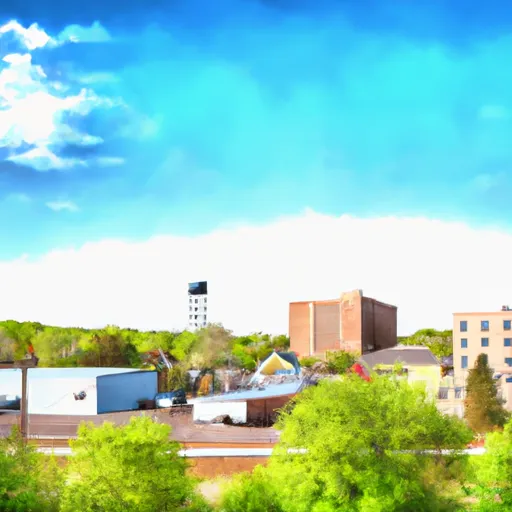-
 Snoflo Premium
Snoflo Premium
Get unlimited access to all our content
With no Ad interruptions! - Start Your Free Trial Login with existing account
Trail
Eden Index
Climate
4.8
•
Recreation
•
Community
•
Safeguard
1.9/10

Trail, Minnesota is a charming town located in the northeastern part of the state. Known for its picturesque landscapes and abundant outdoor activities, Trail offers a pleasant climate that varies throughout the year. Summers are mild and enjoyable, with average temperatures ranging from 60°F to 80°F. Winters can be harsh, with temperatures dropping to as low as -20°F, but the beautiful snowy scenery makes it a haven for winter sports enthusiasts.
The hydrology constituents of Trail are diverse and abundant. The town is surrounded by numerous lakes and rivers, providing ample opportunities for fishing, boating, and water sports. Lake Superior, the largest freshwater lake in the world, is a short drive away, offering breathtaking views and recreational activities.
Outdoor recreation opportunities in Trail are abundant and cater to all tastes. The town boasts numerous hiking trails, perfect for exploring the lush forests and observing wildlife. In the winter, visitors can enjoy cross-country skiing, snowshoeing, and snowmobiling on the well-maintained trails. The nearby state parks offer camping facilities, picnic areas, and opportunities for birdwatching and nature photography.
Overall, Trail, Minnesota is an outdoor enthusiast's paradise, with its favorable climate, diverse hydrology constituents, and a wide range of recreational activities for every season.
What is the Eden Index?
The Snoflo Eden Index serves as a comprehensive rating system for regions, evaluating their desirability through a holistic assessment of climate health, outdoor recreation opportunities, and natural disaster risk, acknowledging the profound impact of these factors on livability and well-being.
Climate Health Indicator (CHI): 4.8
Trail receives approximately
601mm of rain per year,
with humidity levels near 83%
and air temperatures averaging around
4°C.
Trail has a plant hardyness factor of
3, meaning
plants and agriculture in this region thrive during a short period during spring and early summer. Most
plants will die off during the colder winter months.
By considering the ideal temperature range, reliable water supplies, clean air, and stable seasonal rain or snowpacks, the Climate Health Indicator (CHI) underscores the significance of a healthy climate as the foundation for quality living.
A healthy climate is paramount for ensuring a high quality of life and livability in a region, fostering both physical well-being and environmental harmony. This can be characterized by ideal temperatures, reliable access to water supplies, clean air, and consistent seasonal rain or snowpacks.
Weather Forecast
Streamflow Conditions
Lower Red
Area Rivers
Lower Red
Snowpack Depths
Lower Red
Reservoir Storage Capacity
Lower Red
Groundwater Levels
Recreational Opportunity Index (ROI):
The Recreational Opportunity Index (ROI) recognizes the value of outdoor recreational options, such as parks, hiking trails, camping sites, and fishing spots, while acknowledging that climate plays a pivotal role in ensuring the comfort and consistency of these experiences.
Access to outdoor recreational opportunities, encompassing activities such as parks, hiking, camping, and fishing, is crucial for overall well-being, and the climate plays a pivotal role in enabling and enhancing these experiences, ensuring that individuals can engage in nature-based activities comfortably and consistently.
Camping Areas
| Campground | Campsites | Reservations | Toilets | Showers | Elevation |
|---|---|---|---|---|---|
| Glendalough State Park | 22 | 1,350 ft | |||
| Tipsinah Mounds City Park | 75 | 1,170 ft | |||
| Brereton Lake - Whiteshell Provincial Park | 29 | 1,034 ft | |||
| Chippewa Co Park | 8 | 1,374 ft | |||
| Grygla Camping Area | None | 1,174 ft | |||
| White Lake - Whiteshell Provincial Park | 37 | 1,018 ft | |||
| Roseau City Park | 20 | 1,050 ft | |||
| American Legion Park - Detroit Lakes | 100 | 1,342 ft | |||
| Hayes Lake State Park | 35 | 1,182 ft |
Nearby Fishing
Catastrophe Safeguard Index (CSI):
The Catastrophe Safeguard Index (CSI) recognizes that natural disaster risk, encompassing floods, fires, hurricanes, and tornadoes, can drastically affect safety and the overall appeal of an area.
The level of natural disaster risk in a region significantly affects safety and the overall livability, with climate change amplifying these risks by potentially increasing the frequency and intensity of events like floods, fires, hurricanes, and tornadoes, thereby posing substantial challenges to community resilience and well-being.
Community Resilience Indicator (CRI):
The Community Resilience Indicator (CRI) recognizes that education, healthcare, and socioeconomics are crucial to the well-being of a region. The CRI acknowledges the profound impact of these elements on residents' overall quality of life. By evaluating educational resources, healthcare accessibility, and economic inclusivity, the index captures the essential aspects that contribute to a thriving community, fostering resident satisfaction, equity, and social cohesion.

